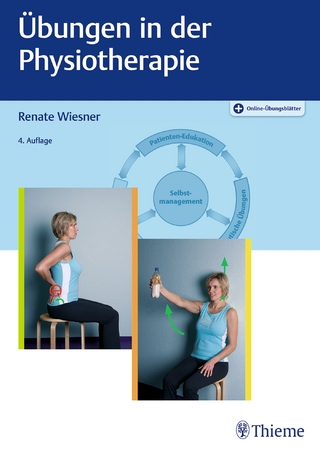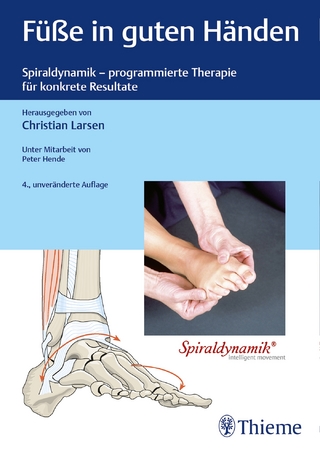
Handbook of Biomedical Telemetry
Wiley-IEEE Press (Verlag)
978-1-118-38861-7 (ISBN)
A must-have compendium on biomedical telemetry for all biomedical professional engineers, researchers, and graduate students in the field
Handbook of Biomedical Telemetry describes the main components of a typical biomedical telemetry system, as well as its technical challenges. Written by a diverse group of experts in the field, it is filled with overviews, highly-detailed scientific analyses, and example applications of biomedical telemetry. The book also addresses technologies for biomedical sensing and design of biomedical telemetry devices with special emphasis on powering/integration issues and materials for biomedical telemetry applications.
Handbook of Biomedical Telemetry:
Describes the main components of a typical biomedical telemetry system, along with the technical challenges
Discusses issues of spectrum regulations, standards, and interoperability—while major technical challenges related to advanced materials, miniaturization, and biocompatibility issues are also included
Covers body area electromagnetics, inductive coupling, antennas for biomedical telemetry, intra-body communications, non-RF communication links for biomedical telemetry (optical biotelemetry), as well as safety issues, human phantoms, and exposure assessment to high-frequency biotelemetry fields
Presents biosensor network topologies and standards; context-aware sensing and multi-sensor fusion; security and privacy issues in biomedical telemetry; and the connection between biomedical telemetry and telemedicine
Introduces clinical applications of Body Sensor Networks (BSNs) in addition to selected examples of wearable, implantable, ingestible devices, stimulator and integrated mobile healthcare system paradigms for monitoring and therapeutic intervention
Covering biomedical telemetry devices, biosensor network topologies and standards, clinical applications, wearable and implantable devices, and the effects on the mobile healthcare system, this compendium is a must-have for professional engineers, researchers, and graduate students.
KONSTANTINA S. NIKITA is a Professor within the School of Electrical and Computer Engineering at NTUA (National Technical University of Athens). She has authored or coauthored six books, 170 papers in refereed international journals, and over 300 papers in international conference proceedings. The holder of two patents, Dr. Nikita is a senior member of the Institute of Electrical and Electronics Engineers (IEEE); an Associate Editor of the IEEE Transactions on Biomedical Engineering, the Journal of Biomedical and Health Informatics, and the Bioelectromagnetics Journal; a member of the EMBS BHI Technical Committee; the Founding Chair and Ambassador of the IEEE-Engineering in Medicine and Biology Society, Greece Chapter; and Vice Chair of the IEEE Greece Section.
Preface xxi
Acknowledgments xxiii
Contributors xxv
1 Introduction to Biomedical Telemetry 1
Konstantina S. Nikita
1.1 What is Biomedical Telemetry? 1
1.2 Significance of Area 3
1.3 Typical Biomedical Telemetry System 4
1.4 Challenges in Biomedical Telemetry 5
1.5 Commercial Medical Telemetry Devices 14
1.6 Overview of Book 19
References 23
Part I Biomedical Telemetry Devices 27
2 Design Considerations of Biomedical Telemetry Devices 29
Dominik Cirmirakis and Andreas Demosthenous
2.1 Introduction 29
2.2 Energy Transfer Types 30
2.3 Architecture of Inductively Coupled Biomedical Telemetry Devices 31
2.4 Data Transmission Methods 39
2.5 Safety Issues 44
2.6 Conclusion 51
References 51
3 Sensing Principles for Biomedical Telemetry 56
Athanasios Lioumpas, Georgia Ntouni, and Konstantina S. Nikita
3.1 Introduction 56
3.2 Biosensor Structure 57
3.3 Electrochemical Biosensors 59
3.4 Optical Biosensors 63
3.5 Thermal/Calorimetric Biosensors 67
3.6 Piezoelectric Biosensors 69
3.7 Other Types of Biosensors 71
3.8 Conclusions 72
References 73
4 Sensing Technologies for Biomedical Telemetry 76
Toshiyo Tamura
4.1 Introduction 76
4.2 Noninvasive Sensors and Interfaces 77
4.3 Invasive and Implantable Sensors 92
4.4 Conclusion 101
References 101
5 Power Issues in Biomedical Telemetry 108
Manos M. Tentzeris, Rushi Vyas, Wei Wei, Yoshihiro Kawahara, Li Yang, Stavros Georgakopoulos, Vasileios Lakafosis, Sangkil Kim, Hoseon Lee, Taoran Le, Sagar Mukala, and Anya Traille
5.1 Introduction and Powering Mechanisms 108
5.2 Motion-Powered Radio Frequency Identification (RFID) Wireless Sensors 109
5.3 Noninvasive Wireless Methods for Powering on Sensors 112
5.4 Conclusion 129
References 129
Part II Propagation and Communication Issues for Biomedical Telemetry 131
6 Numerical and Experimental Techniques for Body Area Electromagnetics 133
Asimina Kiourti and Konstantina S. Nikita
6.1 Introduction 133
6.2 Electrical Properties of Human Body Tissues 135
6.3 Numerical Modeling 139
6.4 Physical Modeling 154
6.5 Safety Issues 164
6.6 Conclusion 167
References 168
7 Inductive Coupling 174
Maysam Ghovanloo and Mehdi Kiani
7.1 Introduction 174
7.2 Induction Principles 175
7.3 Wireless Power Transmission 178
7.4 Inductive Coupling for Biomedical Telemetry 186
7.5 Inductive Data Transmission 192
7.6 Broader Applications 201
7.7 Future Research Directions 202
7.8 Conclusion 202
References 203
8 Antennas and RF Communication 209
Asimina Kiourti and Konstantina S. Nikita
8.1 Introduction 209
8.2 Background Information 211
8.3 On-Body Antennas 212
8.4 Implantable Antennas 223
8.5 Ingestible Antennas 235
8.6 Conclusion and Future Research Directions 245
References 246
9 Intrabody Communication 252
Laura M. Roa, Javier Reina-Tosina, Amparo Callejón-Leblic, David Naranjo, and Miguel Á. Estudillo-Valderrama
9.1 Introduction 252
9.2 Intrabody Communication Transmission Methods 256
9.3 Dielectric Properties of Human Body 259
9.4 Experimental Characterization of IBC Channel 265
9.5 Introduction to IBC Models 273
9.6 IBC Propagation Channel 282
9.7 Conclusion 292
Acknowledgments 294
References 294
10 Optical Biotelemetry 301
Koichi Shimizu
10.1 Introduction 301
10.2 Optical Technology for Optical Biotelemetry 303
10.3 Communication Technology for Optical Telemetry 306
10.4 Propagation of Optical Signal 309
10.5 Multiplexing in Optical Telemetry 313
10.6 Applications of Optical Telemetry 316
10.7 Conclusion 327
References 328
11 Biosensor Communication Technology and Standards 330
Lars Schmitt, Javier Espina, Thomas Falck, and Dong Wang
11.1 Introduction 330
11.2 Biosensor Application Scenarios 332
11.3 Biosensor Communication Technologies 335
11.4 Conclusion 364
References 365
12 Context-Aware Sensing and Multisensor Fusion 368
Stefan Hey
12.1 Introduction 368
12.2 Context-Aware Sensing 368
12.3 Multisensor Fusion 373
12.4 Example Application: Stress Measurement 378
12.5 Conclusion and Future Research Directions 379
References 379
13 Security and Privacy in Biomedical Telemetry: Mobile Health Platform for Secure Information Exchange 382
Nikolaos Bourbakis, Alexandros Pantelopoulos, and Raghudeep Kannavara
13.1 Introduction 382
13.2 Digital Security 383
13.3 Wearable Health Monitoring Systems (WHMS) Platform 390
13.4 Processing of Physiological Data 394
13.5 Secure Information Exchange 400
13.6 Conclusion and Future Research Directions 414
Acknowledgment 415
References 415
14 Connection Between Biomedical Telemetry and Telemedicine 419
Emmanouil G. Spanakis, Vangelis Sakkalis, Kostas Marias, and Manolis Tsiknakis
14.1 Introduction 419
14.2 Biomedical Instrumentation 420
14.3 Biomedical Telemetry and Telemedicine: Related Work 421
14.4 Theory and Applications of Biomedical Telemetry 423
14.5 Integration of Biomedical Telemetry with Telemedicine 423
14.6 Wireless Communication Protocols and Standards 425
14.7 Cross-Layer Design of Wireless Biomedical Telemetry and Telemedicine Health Networks 425
14.8 Telecommunication Networks in Health Care for Biomedical Telemetry 428
14.9 Future Research Directions and Challenges 437
14.10 Conclusion 440
References 442
15 Safety Issues in Biomedical Telemetry 445
Konstantinos A. Psathas, Asimina Kiourti, and Konstantina S. Nikita
15.1 Introduction 445
15.2 Operational Safety 446
15.3 Product and Device Hazards 450
15.4 Patient and Clinical Safety 454
15.5 Human Factor and Use Issues 458
15.6 Electromagnetic Compatibility and Interference Issues 461
15.7 Applicable Guidelines 464
15.8 Occupational Safety 471
15.9 Future Research Directions 472
15.10 Conclusion 473
References 474
Part III Example Applications of Biomedical Telemetry 479
16 Clinical Applications of Body Sensor Networks 481
Richard M. Kwasnicki and Guang-Zhong Yang
16.1 Introduction 481
16.2 Healthcare Paradigm Shift for Pervasive Sensing 483
16.3 Usage Scenarios 484
16.4 Opportunities and Future Challenges 494
16.5 Conclusion 501
Acknowledgment 502
References 502
17 Wearable Health Care System Paradigm 505
Yang Hao and Robert Foster
17.1 Introduction 505
17.2 Wireless Wearable Technology in Health Care 506
17.3 Methods and Design Approach for Wireless Wearable Systems 509
17.4 Example Wireless Body Area Network (WBAN) Applications in Health Care 516
17.5 Conclusion 521
References 521
18 Epidermal Sensor Paradigm: Inner Layer Tissue Monitoring 525
Dimitris Psychoudakis, Chi-Chih Chen, Gil-Young Lee, and John L. Volakis
18.1 Introduction 525
18.2 Review of Electromagnetic Properties of Human Body 526
18.3 Propagation Modes for Body-Centric Wireless Communications 531
18.4 Human Torso Model for Body-Centric Wireless Communication 537
18.5 Two-Layer Model for Internal Organ Monitoring 542
18.6 Epidermal RF Sensor for Inner Layer Tissue Monitoring 542
18.7 Extraction of Dielectric Constant 544
18.8 Conclusion 546
References 547
19 Implantable Health Care System Paradigm 549
Masaharu Takahashi and Koichi Ito
19.1 Introduction 549
19.2 Multilayered Model Simulating Human Body 550
19.3 Cardiac Pacemaker Embedded in Multilayered Models 554
19.4 Implantable Health Care System Paradigm 562
19.5 Conclusion and Future Research Directions 568
References 570
20 Ingestible Health Care System Paradigm for Wireless Capsule Endoscopy 572
Nikolaos Bourbakis and Alexandros Karargyris
20.1 Introduction 572
20.2 WCE and Endoscopic Imaging 576
20.3 Diagnostic Methods and Challenges 585
20.4 Future Directions: Design New Generation of WCE 586
20.5 Conclusion and WCE Global Health Care 591
References 591
21 Stimulator Paradigm: Artificial Retina 593
Carlos J. Cela, Keyoor C. Gosalia, Anil Kumar RamRakhyani, Gianluca Lazzi, Shruthi Soora, Gerard J. Hayes, and Michael D. Dickey
21.1 Introduction 593
21.2 Telemetry for Artificial Retina 594
21.3 Intraocular Telemetry Antennas 595
21.4 Multicoil Telemetry 611
21.5 Future Research Directions: Flexible and Liquid Antennas 618
21.6 Conclusion 620
References 620
22 mHealth-Integrated System Paradigm: Diabetes Management 623
Alessio Fioravanti, Giuseppe Fico, Alejandro González Patón, Jan-Paul Leuteritz, Alejandra Guillén Arredondo, and María Teresa Arredondo Waldmeyer
22.1 Clinical Treatment 623
22.2 Diabetes Treatment through Telemetry 624
22.3 Problems Related to Current Treatments 625
22.4 Assessment: State of the Art 625
22.5 Technological Solution 626
22.6 METABO System 627
22.7 Evaluation Methodology: Data Collection and System Testing 629
22.8 Results 631
22.9 Conclusion 631
Acknowledgments 632
References 632
23 Advanced Material-Based Sensing Structures 633
Manos M. Tentzeris, Sangkil Kim, Vasileios Lakafosis, Hoseon Lee, Taoran Le, Rushi Vyas, Sagar Mukala, and Anya Traille
23.1 Introduction 633
23.2 Human-Body-Wearable Antennas 634
23.3 Carbon-Nanotube-Based Ammonia Detection for Medical Diagnosis 656
23.4 Graphene-Based Ammonia Detection for Medical Diagnosis 670
23.5 Integrated Wireless Modules 679
23.6 Conclusion 685
References 686
Index 691
| Erscheint lt. Verlag | 10.10.2014 |
|---|---|
| Reihe/Serie | IEEE Press Series on Biomedical Engineering |
| Sprache | englisch |
| Maße | 164 x 242 mm |
| Gewicht | 1193 g |
| Themenwelt | Medizin / Pharmazie ► Physiotherapie / Ergotherapie ► Orthopädie |
| Technik ► Elektrotechnik / Energietechnik | |
| Technik ► Medizintechnik | |
| Technik ► Nachrichtentechnik | |
| Technik ► Umwelttechnik / Biotechnologie | |
| ISBN-10 | 1-118-38861-5 / 1118388615 |
| ISBN-13 | 978-1-118-38861-7 / 9781118388617 |
| Zustand | Neuware |
| Informationen gemäß Produktsicherheitsverordnung (GPSR) | |
| Haben Sie eine Frage zum Produkt? |
aus dem Bereich


